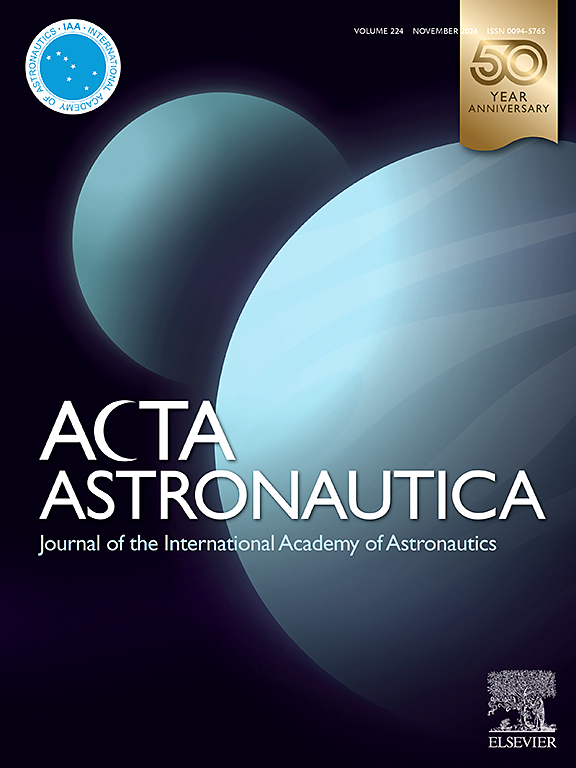Accuracy analysis of orbit determination for high Earth orbit gravitational wave detectors using multi-GNSS sidelobe signals
IF 3.1
2区 物理与天体物理
Q1 ENGINEERING, AEROSPACE
引用次数: 0
Abstract
It is critical to maintain high-precision orbit determination in high Earth orbit gravitational wave detectors. The TianQin space-borne gravitational wave detector, a typical high Earth orbit satellite constellation, utilises an equilateral triangular satellite formation design. This paper presents the first study of the orbit determination of TianQin by utilising global navigation satellite system (GNSS) sidelobe signals through simulation. The number of visible GNSS satellites, tracking performance, position dilution of precision (PDOP), single point positioning (SPP) accuracy, and precise orbit determination (POD) accuracy of the TianQin satellites are comprehensively analysed to provide a reference for subsequent scientific tasks. The conclusions are as follows: (1) Due to the high orbit of the TianQin satellites, the signal intensity is weak, resulting in reduced visibility, narrower elevation angles of the visible antenna, and more prominent geometric accuracy factors. Therefore, utilising multi-GNSS systems and side lobe signals for orbit determination is necessary. (2) The receiver’s signal reception threshold plays a crucial role. Higher receiver sensitivity enhances the positioning and orbit determination performances of the TianQin satellites. (3) With a signal reception threshold setting of -159 dBm, the SPP accuracy of the TianQin satellites using the four GNSS system configurations is 153.81 m. (4) With a signal reception threshold set to -159 dBm, the four GNSS systems can fulfil TianQin’s orbit determination accuracy requirements of 5 m for radial position and 2 mm/s for along-track velocity within a 7-day arc length. TianQin’s position accuracy is 12.27 m for the 3-dimensional (3D) direction and 4.02 m for the radial direction, and the velocity accuracy is 0.65 mm/s for the 3D direction and 0.15 mm/s for the along-track direction.
求助全文
约1分钟内获得全文
求助全文
来源期刊

Acta Astronautica
工程技术-工程:宇航
CiteScore
7.20
自引率
22.90%
发文量
599
审稿时长
53 days
期刊介绍:
Acta Astronautica is sponsored by the International Academy of Astronautics. Content is based on original contributions in all fields of basic, engineering, life and social space sciences and of space technology related to:
The peaceful scientific exploration of space,
Its exploitation for human welfare and progress,
Conception, design, development and operation of space-borne and Earth-based systems,
In addition to regular issues, the journal publishes selected proceedings of the annual International Astronautical Congress (IAC), transactions of the IAA and special issues on topics of current interest, such as microgravity, space station technology, geostationary orbits, and space economics. Other subject areas include satellite technology, space transportation and communications, space energy, power and propulsion, astrodynamics, extraterrestrial intelligence and Earth observations.
 求助内容:
求助内容: 应助结果提醒方式:
应助结果提醒方式:


